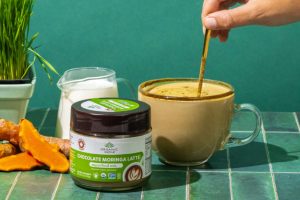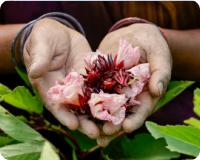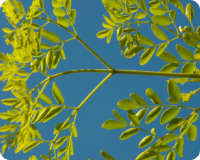

Section

Back
Harnessing the Ancient Power of Adaptogenic Herbs
07/05/2019 |
Conscious Healthy Living, Herbal Secrets, Live Vibrantly
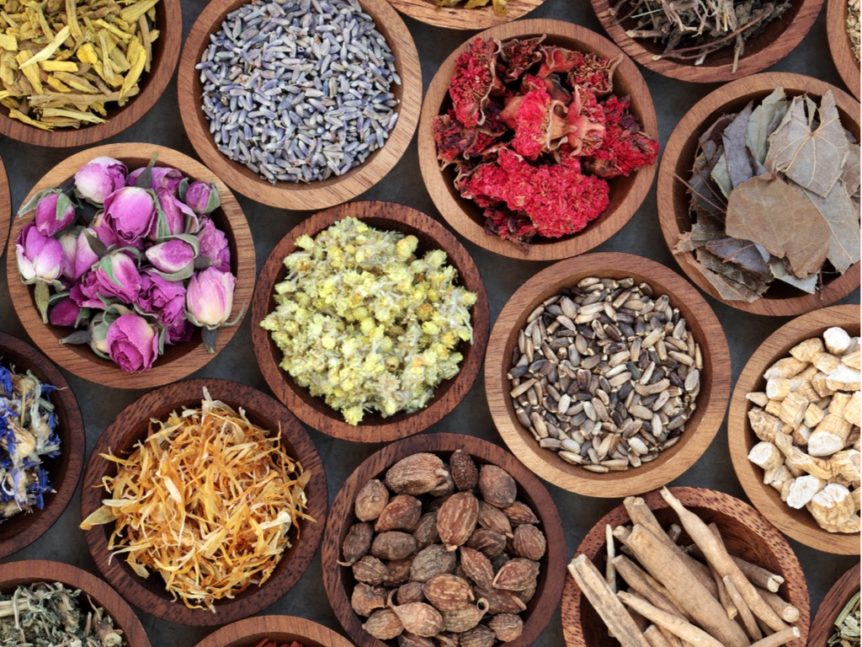
Known as the oldest healing system in the world, Ayurvedic medicine has spent 5,000 years cultivating harmony within the body to bring about good health. In doing so, it has achieved tremendous success in healing with plants, to the extent that numerous plant varieties have been worshipped in Vedic religion for the potent life-giving forces contained within them. For their unique abilities to treat and fend off illness, a class of herbs known as “adaptogens” have come to be regarded as among the most highly celebrated of these plants.
Western medical research studies have been relatively short-term, compared to the thousands of years of fastidious research ancient physicians have conducted and recorded.
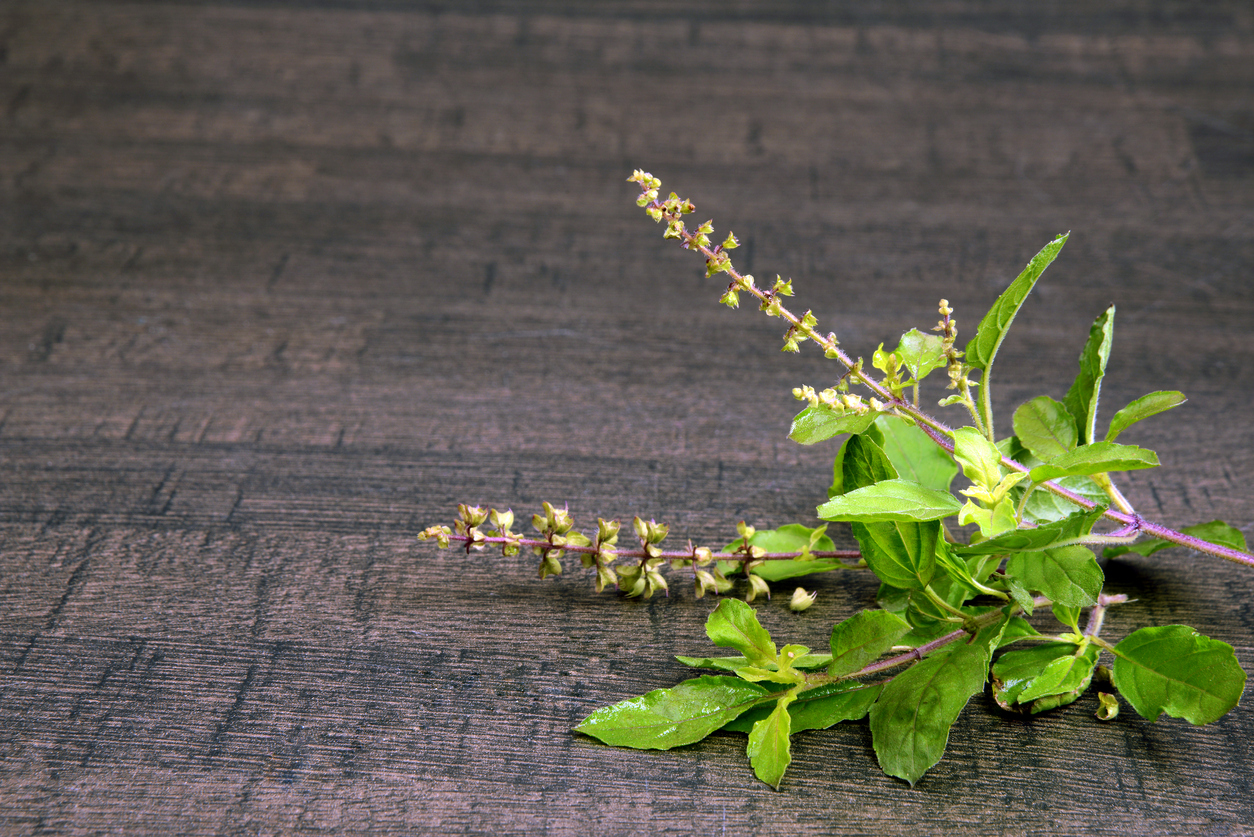
What is an Adaptogen?
The term “adaptogen” was coined in the 1940s by Dr. Nicolai V. Lazarev, a Soviet scientist, medical doctor, and pharmacologist, who was studying the body’s resistance to stress. The term is rooted in the Latin adaptare, which means to fit or adjust, and applies to substances that elevate the body’s stress resistance.
While Dr. Lazarev began his research working with chemical substances, his colleague Israel I. Brekhman soon steered them toward the study of natural substances. Together, they began the western medical discovery of what Ayurvedic practitioners had already known for millennia: that certain plants contain pharmacologically active compounds that give them the ability to resist stressful environments via adaptation — and some of those qualities are passed to the individual who ingests the plants, enabling him or her to better resist the stresses of modern life.
According to adaptogen expert Dr. David Winston, an adaptogen must meet three specific criteria:
- The substance is relatively non-toxic to the recipient.
- It influences many organs or body systems (non-specific). Then acts by increasing resistance of the organism to a broad spectrum of adverse biological, chemical, and physical factors.
- It helps modulate system function and maintain homeostasis.
How Do Adaptogens Work?
When an adaptogenic herb is consumed, the adaptogenic compounds within it directly target the adrenal system and work to lower the levels of stress hormones, fending off adrenal fatigue. Because stress hormones have the ability to wreak significant havoc on both physical and psychological health, adaptogens can come to the rescue because they have the ability to thwart such conditions as weight gain, bone loss, diabetes, heart disease, and digestive issues.
Since Western medical science began giving credence to the value of adaptogens, it has attempted to explain them using its own research methods. These have repeatedly fallen short because, unlike Ayurveda, it only takes into account the physical condition, rather than the mind-body basis by which adaptogenic herbal medicine works. Likewise, when attempting to study a natural substance, Western research methodology fails to study that substance in its complete form, preferring instead to isolate components in it and try to make them work in a vacuum — such as when pharmaceutical companies studied these herbs in the 1940s and 1950s, spending millions of dollars to conduct random drug screenings on their various components in hopes of adding them in their isolated forms to drugs. Most of these studies resulted in utter failure due to the prevailing reductionist thinking of medical research and practice.
Adaptogens in Western Science
Western medical research studies have been relatively short-term, compared to the thousands of years of fastidious research ancient physicians have conducted and recorded. Natural healthcare practitioners often criticize western researchers because they do not give credit where it is due — to the thousands of years of Ayurvedic research, trials, and success predicated on the completeness of nature. By recognizing the value of traditional ancient healing, modern allopathic doctors might be humbled to understand the limitations of their own methods and that particular aspects of the human body do not function in a vacuum. Studying people and plants isolation cannot to accurately reflect the human condition in its dynamism and complexity.

Ayurvedic Medicine and its History of Adaptogens
The term “Ayurveda” stems from the Sanskrit words ayus, meaning “life,” and veda, meaning “knowledge.” Its healing philosophy revolves around the body’s three governing elements, or the tridoshas, which, when there is too much of one, throws the body out of balance and creates disease. The doshas are as follows: vata, which governs energy formation and conservation, tissue respiration, and related mechanisms; pitta, related to enzymes and neurological systems and neurological hormones; and kapha, related to water and electrolyte balance.
In the view of Ayurvedic Medicine, adaptogenic herbs are powerfully effective plants, enabling the body to better cope with stress and harmonize the doshas. It’s for this reason that they are so heavily relied upon in its use of herbal medicines.
Because Ayurvedic healing is the oldest known of all medical sciences, it has been largely influential in the cultivation of the world’s other oldest healing traditions. Because of Buddhism’s origination in India, the spread of its beliefs also served to spread Ayurvedic healing philosophies. As such, Ayurveda found its way into Tibet and China, contributing to the development of their traditional medical healing systems. Ayurveda also influenced both Islamic and early European medicine.

Four Ayurvedic Adaptogens
Of the herbs fitting the adaptogenic definition, four in particular stand out for the breadth of their use in Ayurvedic medicine:
Tulsi or “Holy Basil” — There are so many holy basil benefits that the herb has come to be the most prized of all adaptogens in herbal medicine. For millennia, healthcare practitioners have relied upon tulsi for its antioxidant, neuroprotective, stress-reducing, and radioprotective effects. To enjoy its full effects, look to consume it as Holy Basil tea or in supplement form.
Ashwagandha — In Ayurvedic medicine, ashwagandha is highly regarded for its ability to prolong life, stimulate the mind, enhance libido, and impart restorative qualities. Its root is most commonly ingested as part of a medicinal formula, though it is sometimes applied to the skin as a poultice to treat wounds and other skin afflictions. You can even ingest it in the form of Ashwagandha tea for a calming, stress-relieving treat.
Turmeric — To those more invested in the culinary world than that of herbal medicines, it may come as a surprise that the turmeric is more than a colorful spice. Celebrated for its adaptogenic qualities, studies say it is a strong ally when it comes to managing oxidative and inflammatory conditions, metabolic syndrome, arthritis, anxiety, and hyperlipidemia. Even though it can be found in the spice section of nearly every grocery store, turmeric is also regularly enjoyed as tea.
Amla — As one of the most commonly used adaptogenic herbs for rejuvenation, Amla is traditionally esteemed for its ability to restore appetite, soothe nausea, stop vomiting and hemorrhaging, as well as support healthy liver. It is also thought to build immunity toward disease, fight the signs of aging, and rid the blood of toxins. Generally, it is taken as a tonic or used in conjunction with beleric and chebulic myrobalan fruits to make triphala, a famous Ayurvedic concoction that is traditionally used to support bowel health and the circulatory system.
Tulsi, a.k.a. “Holy Basil” — Queen of the Adaptogens
The herb Tulsi goes by many nicknames — “holy basil,” “The Incomparable One,” “The Mother Medicine of Nature,” and “The Queen of Herbs”— all of them conveying its prominence and significance in Ayurvedic medicine. It is so highly regarded in Vedic tradition that it appears ubiquitously in ancient Vedic scriptures. The plant was regarded as a goddess and servant of Lord Vishnu who was reincarnated as a plant offered in worship and service. Because of its significance, Tulsi was incorporated into daily life, ensuring that followers of Vedic traditions would regularly consume it.

Hindus regard Tulsi as the holiest of all plants, and one can typically be found in most Indian households. While used in Ayurvedic medicine for thousands of years for its vitalizing benefits, it wasn’t until 1978 that a group of scientists studied and documented the source of its profound effects. To evaluate the relative antistress potential of Ayurvedic herbs, in the late 1970s researchers screened 50 Indian medicinal plants. Five of these were found to possess “significant adaptogenic activity” and were then compared to other plants in order of their anti-stress potency. Tulsi rose to the top of the list.
Tulsi and Stress
Stress-induced changes, such as increased adrenal gland output and lowered quantities of ascorbic acid and cortisol, were reversed in experiments using Tulsi, even in small doses. Researchers discovered that Tulsi’s effects were not only due to lowered adrenal stress, there were other factors at work, as well. As they continued their research, the team found that Tulsi prevents adverse stress-induced biochemical changes in the brains of animal subjects.
During prolonged stress, levels of two significant neurotransmitters, epinephrine (adrenaline) and norepinephrine (noradrenaline), decrease with the introduction of Tulsi as an adaptogen. Further, dopamine and 5-hydroxytryptamine (serotonin) are increased with stress, yet are normalized and balanced by Tulsi as the plant increases epinephrine and norepinephrine in the brain, as well as the level of dopamine, which is needed as a precursor for making epinephrine and norepinephrine. And serotonin was inhibited in the same process.
Researchers concluded that Tulsi assists the formation of succinate dehydrogenase (SDH), an important enzyme in the energy-producing mitochondria of brain cells that is activated during stress. And, Tulsi assisted in the formation and conservation of cellular energy during the Kreb’s cycle, the major metabolic pathway that generates cellular energy. SDH helps people adapt better during stress, while also defending against free radicals.
Tulsi was shown to increase the body’s capacity to utilize oxygen, which researchers credited for endurance-enhancing effects of the plant. Other benefits included stress-induced ulcer prevention.
When it’s estimated that an astounding 90 percent of all doctors’ visits are due to stress-related illnesses, it’s imperative, in concert with Ayurvedic philosophy, that practitioners address the root cause of these issues, rather than the symptoms. Unless an illness is approached from a mind-body, holistic, and energetic perspective, and the body is prepared (and able) to adapt to the stresses imposed on it by environmental factors, it will continue to suffer. As a solution, proven over millennia of traditional healing practices, nature offers the splendors of adaptogens to bring the doshas back into proper balance.
References:
Maimes, S., & Winston, D. (2007). Adaptogens: Herbs for Strength, Stamina, and Stress Relief. Rochester, VT: Healing Arts Press.
Hoette, Y., Miller, R., & Singh, N. (2010). Tulsi: The Mother Medicine of Nature (2nd ed.). Gomtim Nagar, Lucknow (India): International Institute of Herbal Medicine.
The Clinical Efficacy and Safety of Tulsi in Humans: A Systematic Review of the Literature.
Tulsi – Ocimum sanctum: A herb for all reasons
Disclaimer: This content is not intended to provide diagnosis, treatment or medical advice. Content provided on this site for informational purposes only.
